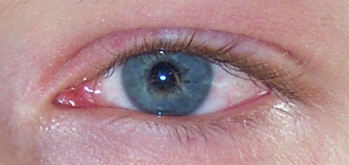Conjunctivitis
Conjunctivitis (commonly called "pinkeye") is an inflammation of the conjunctiva (the outermost layer of the eye and the inner surface of the eyelids), often due to infection. There are three common varieties of conjunctivitis, viral, allergic, and bacterial. Other causes of conjunctivitis include thermal and ultraviolet burns, chemicals, toxins, overuse of contact lenses, foreign bodies, vitamin deficiency, dry eye, dryness due to inadequate lid closure, exposure to chickens infected with Newcastle disease, epithelial dysplasia (pre-cancerous changes), and some conditions of unknown cause such as sarcoidosis. more...
Blepharoconjunctivitis is the combination of conjunctivitis with blepharitis.
Keratoconjunctivitis is the combination of conjunctivitis and keratitis.
Epidemiology
Viral conjunctivitis is spread by aerosol or contact of a variety of contagious viruses, including many that cause the common cold, so that it is often associated with upper respiratory tract symptoms. Clusters of cases have been due to transfer on ophthalmic instruments which make contact with the eye (e.g., tonometers) and have not been adequately sterilised.
Allergic conjunctivitis occurs more frequently among those with allergic conditions, with the symptoms having a seasonal correlation. It can also be caused by allergies to substances such as cosmetics, perfume, protein deposits on contact lenses, or drugs. It usually affects both eyes, and is accompanied by swollen eyelids.
Bacterial conjunctivitis is most often caused by pyogenic bacteria such as Staphylococcus or Streptococcus from the patient's own skin or respiratory flora. Others are due to infection from the environment (eg insect bourne), from other people (usually by touch- especially in children), but occasionally via eye makeup or facial lotions. An example of this is conjunctivitis due the the bacteria Haemophilus influenzae biogroup aegyptius.
Irritant, toxic, thermal and chemical conjunctivitis are associated with exposure to the specific agents, such as flame burns, irritant plant saps, irritant gases (e.g., chlorine or hydrochloric acid ('pool acid') fumes), natural toxins (e.g., ricin picked up by handling castor oil bean necklaces), or splash injury from an enormous variety of industrial chemicals, the most dangerous being strongly alkaline materials.
Xerophthalmia is a term that usually implies a destructive dryness of the conjunctival epithelium due to dietary vitamin A deficiency—a condition virtually forgotten in developed countries, but still causing much damage in developing countries. Other forms of dry eye are associated with aging, poor lid closure, scarring from previous injury, or autoimmune diseases such as rheumatoid arthritis, and these can all cause chronic conjunctivitis.
Diagnosis
Symptoms
Redness, irritation and watering of the eyes are symptoms common to all forms of conjunctivitis. Itch is variable.
Acute allergic conjunctivitis is typically itchy, sometimes distressingly so, and the patient often complains of some lid swelling. Chronic allergy often causes just itch or irritation, and often much frustration because the absence of redness or discharge leads to accusations of hypochondria.
Read more at Wikipedia.org



